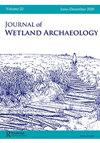生活在南加州海岸的巴洛纳湿地:古环境重建和人类定居
Q1 Arts and Humanities
引用次数: 5
摘要
在美国加利福尼亚州的巴罗纳湿地进行了20多年的考古研究,为重建过去8000年来人类住区如何响应动态环境中的景观变化提供了机会。对岩心样品的地层学、放射性碳测年和古生态指标(有孔虫、介形虫、软体动物、硅藻、硅鞭毛虫和花粉)的分析表明,海平面上升导致Ballona从洛杉矶河口的一个海湾转变为一个泻湖,时间约为7500 cal BP。随着泻湖逐渐被沉积物填满,景观也发生了变化,从全新世中期到历史早期为人类提供了丰富的开发资源。考古记录显示,人类住区也对洛杉矶河河道的长期气候波动和变化作出了反应。在4000 ~ 1500 cal BP之间人类定居最广泛,此时湿地最肥沃。在公元前800年至400年间,当气候条件恶化时,巴罗纳的居民选择放弃大部分地区,而不是像一些邻近人口那样加强对附近远洋资源的开采。400 cal BP之后,当气候条件有所改善时,人们回到了Ballona,但定居点结构与以前明显不同。本文章由计算机程序翻译,如有差异,请以英文原文为准。
Living in the Ballona Wetlands of the Southern California Coast: Paleoenvironmental Reconstruction and Human Settlement
Abstract Over twenty years of archaeological research in the Ballona wetlands, California, USA, has provided the opportunity to reconstruct how settlement responded to landscape change in this dynamic environment over the last 8000 years. Analyses of stratigraphy, radiocarbon dates, and paleoecological indicators (foraminifera, ostracods, molluscs, diatoms, silicoflagellates, and pollen) from core samples indicate that sea level rise caused the Ballona to shift from a bay at the mouth of the Los Angeles River to a lagoon by about 7500 cal BP. As the lagoon gradually filled with sediment, the landscape also changed, providing abundant resources for human exploitation from the middle Holocene to the early historic period. The archaeological record reveals that human settlement responded also to long-term climatic fluctuations and changes in the course of the Los Angeles River. Settlement was most widespread between 4000 and 1500 cal BP, when the wetlands were most productive. The inhabitants of the Ballona chose to abandon most of the area between 800 and 400 cal BP, when climatic conditions deteriorated rather than to intensify exploitation of nearby pelagic resources as some neighbouring populations did. People returned to the Ballona after 400 cal BP, when climatic conditions ameliorated, but with a markedly different settlement structure than before.
求助全文
通过发布文献求助,成功后即可免费获取论文全文。
去求助
来源期刊

Journal of Wetland Archaeology
Arts and Humanities-Archeology (arts and humanities)
CiteScore
1.40
自引率
0.00%
发文量
6
期刊介绍:
The Journal of Wetland Archaeology publishes a wide range of contributions in all fields of wetland archaeology. It includes scientific and methodological features, geoprospection, environmental reconstruction, wetland hydrology, cultural aspects of wetland archaeology, as well as conservation, site management, legislation, and site protection. All periods and all geographic regions are covered.
 求助内容:
求助内容: 应助结果提醒方式:
应助结果提醒方式:


